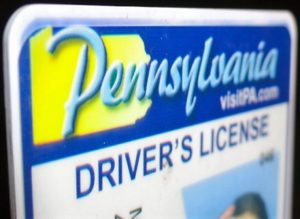
Pennsylvania Governor Tom Wolf has signed Senate Bill 133, known as the Pennsylvania REAL ID Compliance Act (Act 3 of 2017), which will allow Pennsylvania to offer residents an optional REAL ID-compliant driver license or state identification card, which can be used to access airports, and federal facilities.
Under the federal REAL ID Act, beginning January 22, 2018, residents in states that have not come into compliance with federal requirements or obtained an extension will need to show an alternative form of identification such as a passport at airports and when accessing federal buildings and military bases. PennDOT anticipates the U.S. Department of Homeland Security will continue to issue extensions to Pennsylvania until REAL ID products are available for residence. Under SB 133, no Pennsylvania resident will be required to get a REAL ID-compliant driver license or identification card, but residents who choose to do so will be able to use those forms of identification when the new federal requirements go into effect.
System, building infrastructure and process changes will be necessary for Pennsylvania to issue REAL ID-compliant products. Work will begin immediately and PennDOT estimates REAL ID-compliant driver licenses and iidentification cards will be available by March 2019. This will allow ample time for customers who want a REAL ID product to get one before the final DHS effective date of October 1, 2020.
Then, starting October 1, 2020, individuals will need to present a REAL ID-compliant license or another acceptable form of identification in order to enter those facilities.
“With the passage of SB 133, we can start to have substantive discussions with the Department of Homeland Security,” PennDOT Secretary Leslie S. Richards said of the law’s passage. “As we define our path forward to compliance, we’ll have to enhance building infrastructure and make process and system changes.
“We are committed to ensuring we make these changes in a cost-effective manner that delivers for our customers as conveniently as possible.”
PennDOT is required to provide an initial report, as well as annual reports to the General Assembly that include implementation details, cost estimates and overall demand from the public. The initial report is due to the General Assembly in 90 days.





